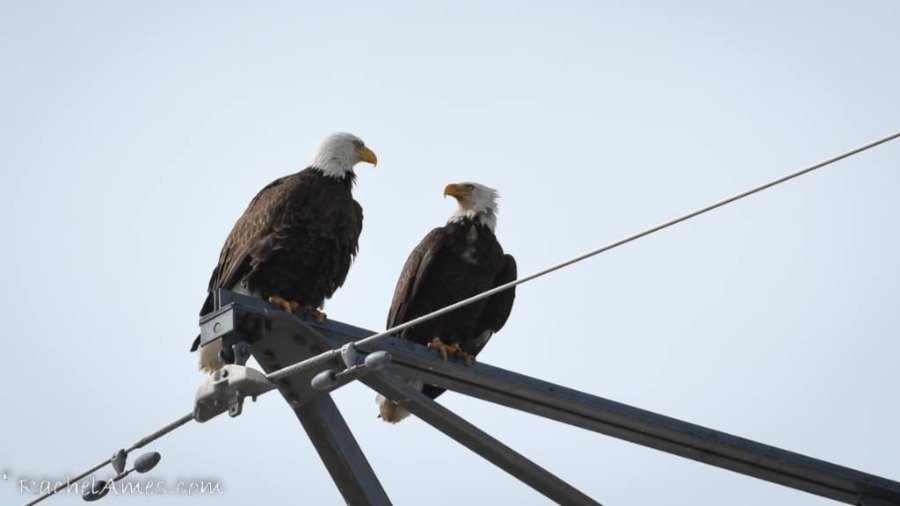Wildlife Wednesday: Lifemates
Written By: Andy Ames, EVWC Board Member
Northern Flickers often mate for life. Unlike most birds, the males provide most of the parental care and night incubation.
The Estes Valley is home to many animals that mate for life, mostly comprised of bird species such as Bald and Golden Eagles, Red-tailed hawks, Canada geese, crows, ravens, magpies, and Northern flickers, just to name a few. But not all life-mates are feathered. Coyotes and beavers also form life-long pair bonds, although this behavior is less common among mammals.
A common sight in the Estes Valley, these two Bald Eagles often hang out on the power towers near Lake Estes. While Bald Eagles are well known for mating for life, they may actually share more nest fidelity. Individuals migrate independently but return to the same nest site. If one doesn’t return for some reason, the other will find a new mate.
Birds vary in their degree of monogamy. American crows are socially monogamous while genetically promiscuous, meaning they stay together and raise their family together but all their offspring may not share the same parents.
Like many corvids, Black-billed magpies form life long pairs.
Red-tailed hawks are solo hunters but mate for life to save time and energy by not having to compete for mates year after year.
Beavers form a life long pair, living in colonies with the adult male and female together along with their offspring.
Not all “love birds”are birds. Coyotes also mate for life with an alpha male and female pair breeding together.







